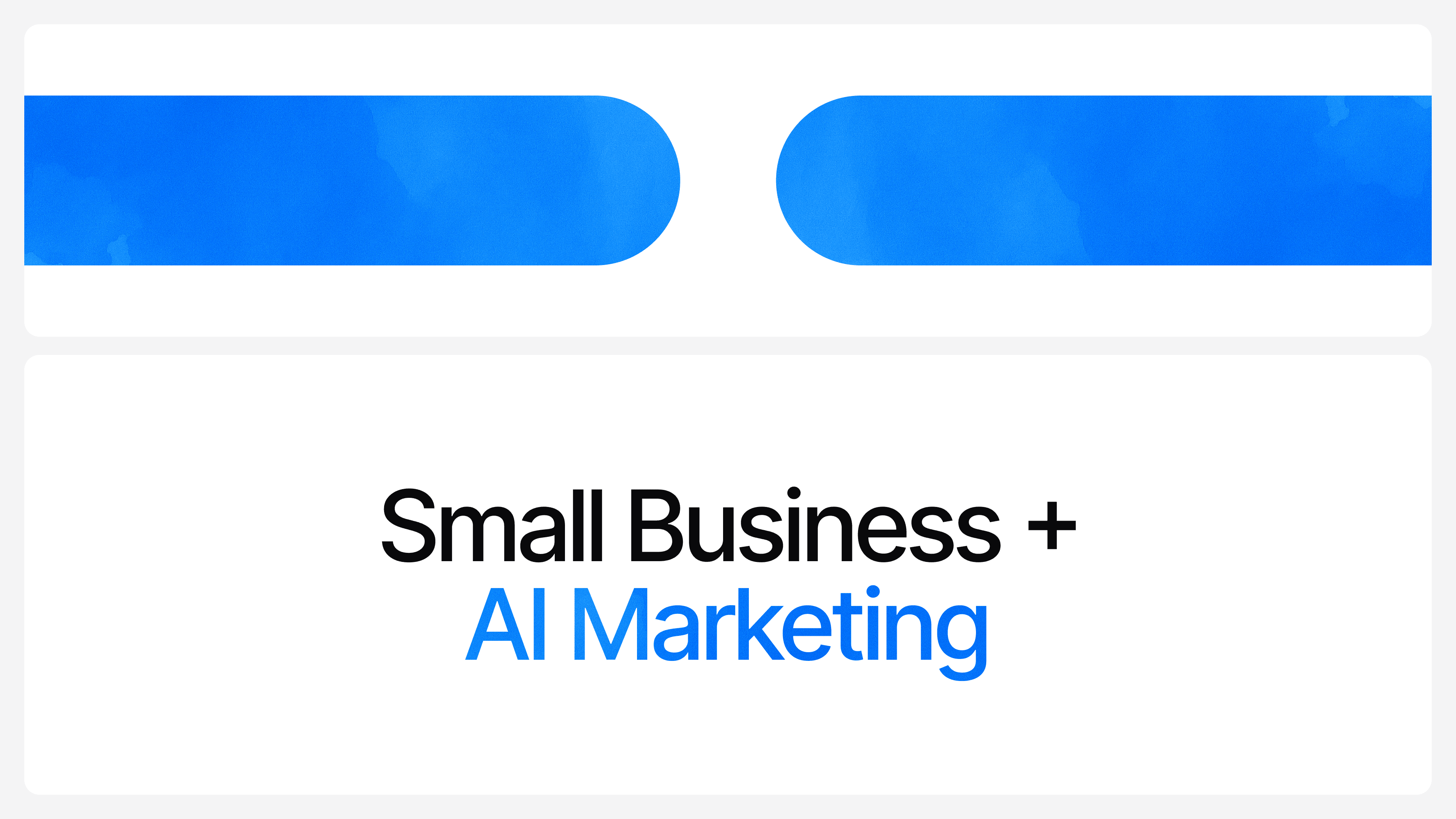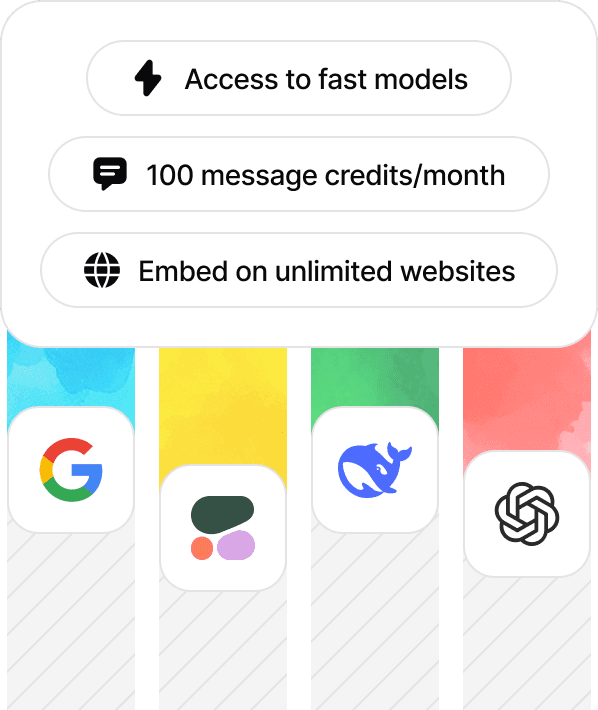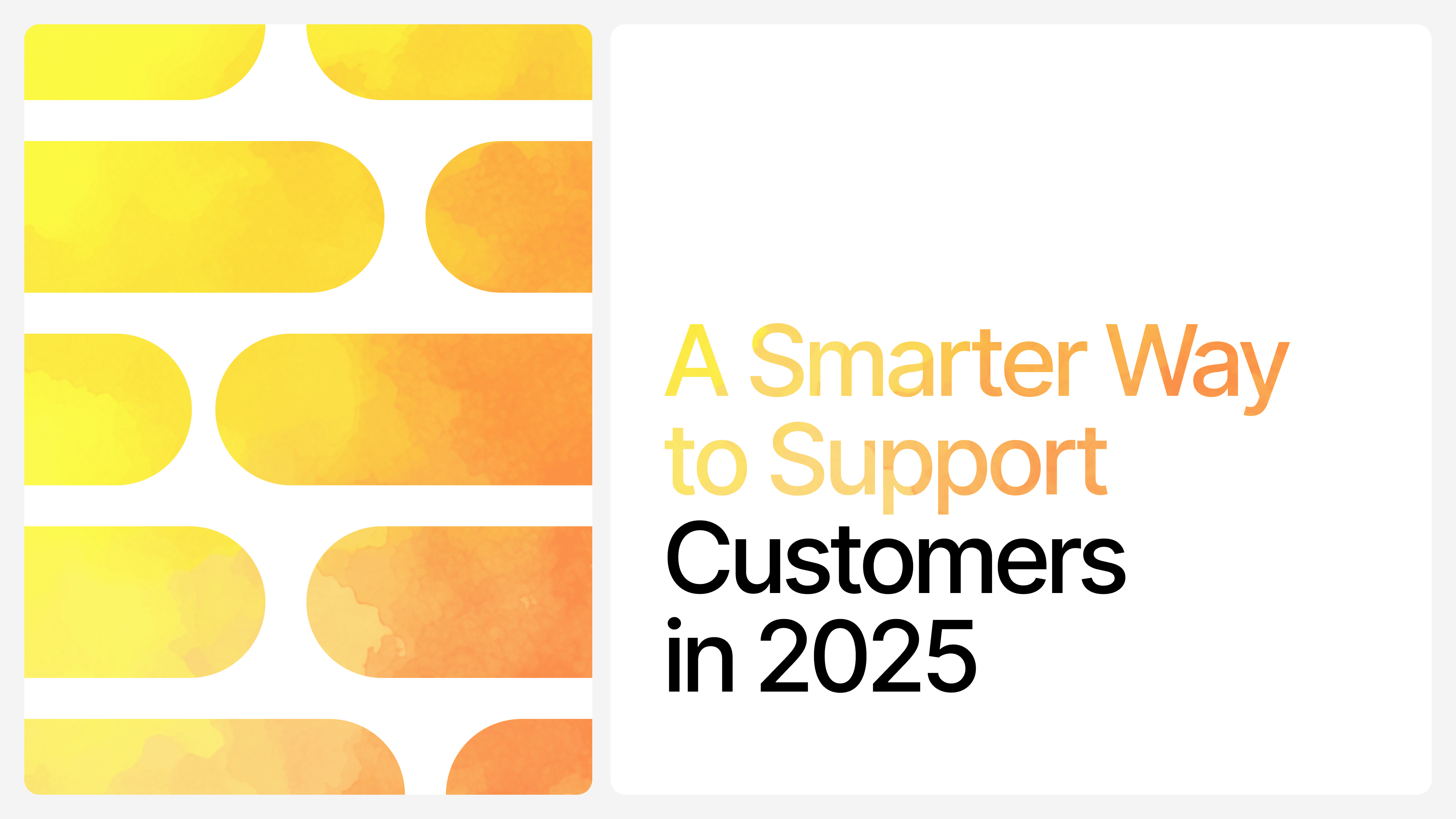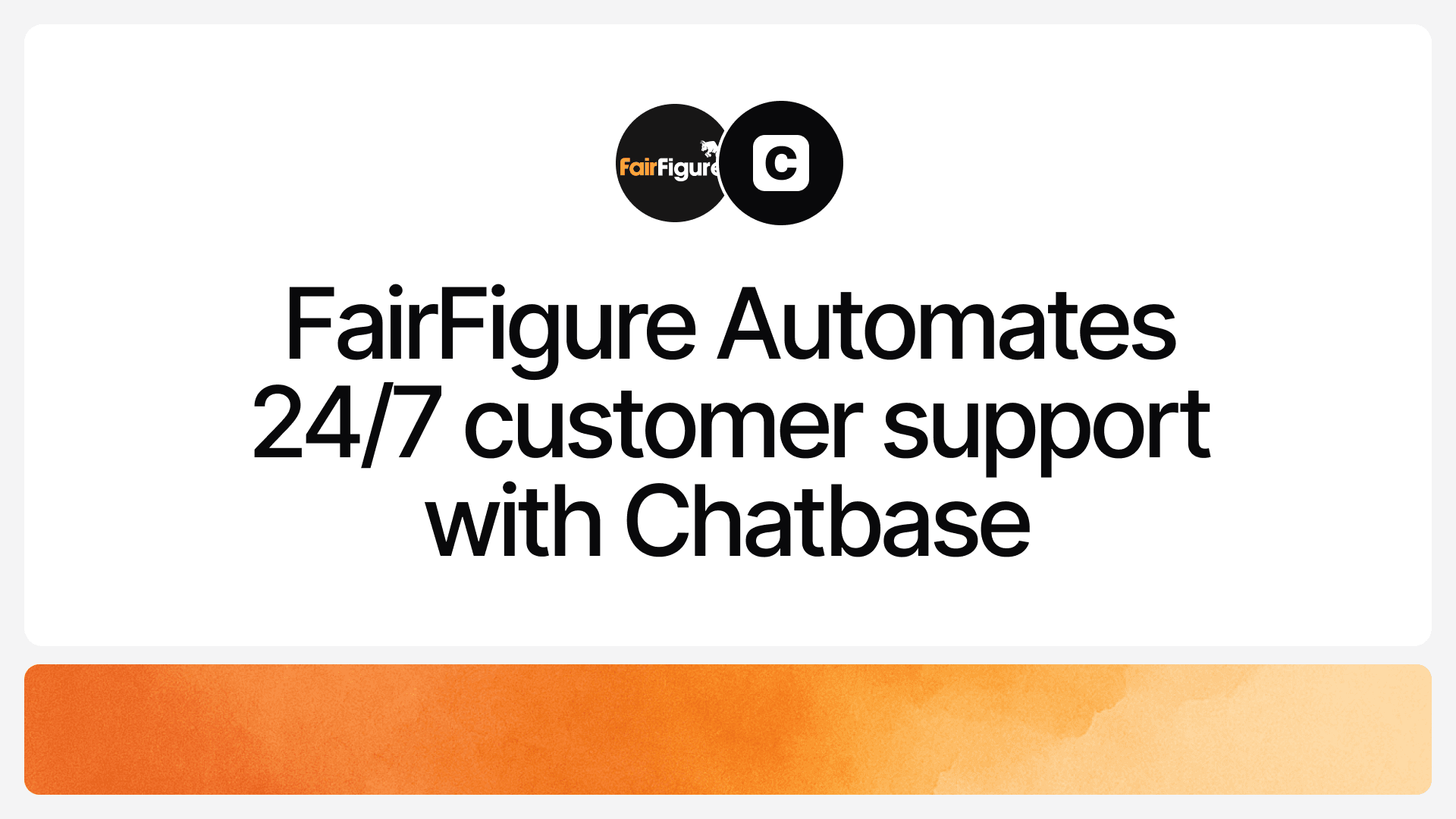How to Use AI for Small Business Marketing
Max T
May 28, 2025
10 min read

Small businesses have always had to be scrappy — doing more with less, wearing multiple hats, and finding clever ways to stand out in noisy markets. But now, there’s a new edge that’s quietly becoming a game-changer: AI.
AI isn’t just for big tech companies or complex industries anymore. It’s becoming more accessible, more practical, and—most importantly—more impactful for small business marketing. From automating the boring stuff to helping you deeply personalize how you connect with customers, AI is reshaping the marketing playbook.
What used to take a team of marketers, designers, and data analysts can now be done faster and smarter—sometimes with just one person using the right tools. And the results? Better targeting, sharper messaging, and more time to focus on the parts of your business that actually need your attention.
But before we dive into the how, let’s first look at what the numbers say. Because the stats aren’t just promising—they’re telling us that AI in marketing is already working.
What the Stats Say
Before we unpack how AI can practically help your marketing efforts, it’s worth pausing to look at the data. Because this isn’t just about future potential—it's already delivering real results.
According to Statista, here’s what we know about the state of AI in marketing:
- 90% of business and marketing professionals across 35 countries say they now use AI in their marketing activities. That’s not a trend—it’s a new standard.
- 88% of them believe AI is key to delivering personalized marketing experiences. This is huge, because personalization has become one of the biggest drivers of engagement and conversion.
- In the U.S., 55% of B2B marketers use AI tools specifically to generate leads. That means more than half are using AI not just to make things easier—but to actively drive growth.
- A growing share are investing in AI SEO services to improve search rankings and organic traffic—automating keyword research, competitor analysis, and content optimization.
- 52% say AI has significantly improved both the speed and efficiency of their marketing work. For small teams or solo founders, that’s a major productivity unlock.
- Globally, 87% of organizations believe that AI technologies will give them a competitive edge—including in marketing.
The numbers tell a clear story: AI is no longer optional. It’s quickly becoming the backbone of modern marketing strategies, even for businesses with limited time, teams, or budgets.
With that foundation laid, let’s dive into the specific, practical ways small businesses can use AI to market smarter, not harder.
1. Personalize Your Marketing
If there’s one area where AI shines brighter than anything else, it’s personalization. Customers today expect businesses to know what they want—even before they ask. But for small teams, delivering personalized experiences at scale sounds almost impossible.
That’s where AI steps in.
AI can analyze data from your customers’ behavior—what they click on, when they open emails, what pages they visit, what they buy—and turn that into actionable insights. With tools like predictive analytics, recommendation engines, and smart segmentation, you can create marketing that feels personal, even if you’re sending it to thousands.
For example:
- Email marketing platforms like Mailchimp and ActiveCampaign use AI to optimize send times and personalize subject lines based on user behavior.
- AI-driven CRMs can score leads based on how likely they are to convert and trigger personalized follow-ups automatically.
- Social media tools can recommend when to post, what to post, and even how to frame your message for specific audience segments.
- Transform static images and text prompts into dynamic marketing videos using Envato VideoGen's AI video generator, powered by multiple top-tier models.
- Instantly generate original branded visuals with the Freepik AI Image Generator, transforming simple text prompts into campaign-ready, high-quality images.
2. Create Marketing Content at Scale and Speed
Creating high-quality marketing content has always been a grind—especially for small business owners juggling a dozen other tasks. Blog posts, social captions, email campaigns, product descriptions, product shots, especially for an online video marketing agency producing scripts and promotional content, it adds up fast.
AI now gives small teams the power to create like a content studio—but without the overhead.
With the right tools, you can:
- Generate blog outlines and drafts in minutes
- Rewrite or repurpose old content for different platforms
- Auto-generate captions, hashtags, and even video scripts
- Analyze tone and optimize for engagement or SEO
Popular tools like Jasper, Copy.ai, and Writer use AI to help you go from idea to published content in record time, and then use a humanizer ai to remove robotic phrasing and match brand voice. Some of these tools are trained specifically for marketing language, tone, and structure—so you’re not just getting generic text, you’re getting messaging that converts.
But here’s the thing: most small businesses are still underutilizing this. They’ll use AI to brainstorm or write a caption here and there, but they haven’t fully tapped into what’s possible when you lean into what some call “vibe marketing.”
Vibe marketing is the idea of replacing your traditional marketing stack—designers, writers, strategists—with a carefully selected suite of AI tools that do 80% of the work, while you guide the direction and final polish. It’s not about replacing people—it’s about replacing the need to hire full-time roles before you're ready.
For example:
- Instantly generate original branded visuals with the Freepik AI Image Generator, transforming simple text prompts into campaign-ready, high-quality images.
- You can generate a month’s worth of Instagram content with visuals and captions using Canva’s AI tools.
- Use Surfer SEO or Frase to generate SEO-optimized blog posts that drive traffic.
- Automate email subject line A/B tests with AI copy assistants inside tools like MailerLite.
And once that content is live, AI analytics tools help you see what’s working—and what’s not—so you can iterate quickly. This makes your marketing not just fast, but smart.
3. Automate Your Customer Service (and Tie It Back to Marketing)
Customer service isn’t just a support function—it’s a frontline marketing channel. Every time someone reaches out with a question about your product, your pricing, or your availability, that’s a potential conversion moment. But if you’re too slow to respond—or can’t respond at all—you’re leaving money on the table.
This is one of the most underrated use cases for AI in small business marketing.
AI-powered chatbots and virtual assistants can handle the majority of your customer questions 24/7, instantly. That includes FAQs, product recommendations, booking support, order tracking, and even post-purchase engagement.
Here’s how it ties into marketing:
- Faster support = higher conversion rates. People buy more when they get answers quickly.
- Consistent messaging = better brand experience. AI tools don’t get tired or go off-brand.
- Ongoing engagement = improved retention. Bots can trigger follow-ups, suggest new products, or request reviews.
And here’s the best part: you don’t need a big setup.
AI-powered chatbots let you train a chatbot on your website’s content in minutes. You can connect it to your product pages, FAQs, and support docs no coding required. Once it’s live, it becomes a smart layer on your site that serves, engages, and converts. To take it a step further, connect your chatbot to an email marketing platform. After a visitor chats with your bot, you can automatically follow up by email with a promo, a reminder, or a product guide. Using one of the cheapest email marketing tools makes this automation possible without increasing your overhead. The chatbot handles the first touch, and email picks up the rest. For small businesses on tight budgets, this is a smart way to scale support and stay top of mind without hiring a full-time rep or answering every message yourself.
4. Predict Customer Behavior and Optimize Campaigns
AI isn’t just great at automating tasks—it’s exceptional at spotting patterns humans miss. And when it comes to marketing, understanding what your audience is likely to do next can completely change how you plan, spend, and scale.
Predictive analytics—powered by AI—lets you:
- Identify which leads are most likely to convert
- Forecast sales trends based on past behavior
- Automatically adjust ad spend or targeting for better ROI
- Trigger personalized offers or emails right before someone churns
Let’s say you run an online store. AI can analyze browsing behavior and purchase history to predict which customers are ready to buy again—and then send them a tailored message or offer at exactly the right time. By integrating tools like the QR Code Generator, you can even track offline engagement and sync it with online behavior, further enriching your data-driven campaigns.
Or if you’re running paid ads, AI tools like Revealbot or Madgicx can auto-optimize campaigns based on performance signals, reducing wasted ad spend and improving results without you needing to be on the dashboard 24/7.
It’s like having a data scientist baked into your marketing toolset—one that works nonstop, learns as it goes, and helps you make sharper decisions.
This kind of insight used to be reserved for enterprise marketing teams. Now, AI is making it accessible to even the leanest operations.
5. Enhance Social Media Management and Engagement
Managing social media can quickly become overwhelming, especially when you’re juggling multiple platforms, each with its own posting best practices, engagement rhythms, and content types. AI tools are stepping in to make this easier and more effective.
Here’s what AI can do for your social media marketing:
- Content scheduling and optimization: AI-powered schedulers analyze when your audience is most active and automatically post at those peak times.
- Sentiment analysis: Understand how your audience feels about your brand or specific campaigns by analyzing comments and messages in real time.
- Engagement bots: AI can automate replies to common comments or questions, keeping your audience engaged even when you’re offline.
- Trend identification: AI scans social platforms to identify emerging trends or relevant hashtags you can capitalize on before your competitors do.
Platforms like Hootsuite Insights, Buffer provide these AI-driven capabilities, allowing you to maintain a consistent, engaging presence without burning out.
Steps for Adopting AI in Marketing
Implementing AI in your small business marketing can feel like stepping into uncharted territory. But with a strategic approach, it becomes manageable—and highly rewarding. Here’s a detailed roadmap to help you start and scale AI adoption effectively:
Identify Your Biggest Marketing Challenges
Before you bring AI into your workflow, get clear on the specific marketing pain points you want to solve. This could be anything from struggling to keep up with content creation, slow response times to customer inquiries, or difficulty personalizing campaigns for different customer segments.
For example, if you’re a local bakery and notice many customers ask the same questions about hours or ingredients, that’s a clear opportunity to automate FAQ responses. Or if you run an online boutique and have trouble scaling your email marketing, AI can help tailor your campaigns based on customer purchase history.
The key here is to focus your efforts where AI can have the biggest impact. Avoid trying to apply AI everywhere at once—that’s a recipe for overwhelm and wasted resources.
Choose AI Tools That Align with Your Goals
Once you know your challenges, research AI tools built to address them. The market is crowded, so narrow your search based on your budget, ease of use, and integrations with your existing systems.
For example:
- If customer service is your priority, an AI chatbot can be trained on your website content to handle questions and support requests immediately.
- For content marketing, tools like Jasper or Copy.ai can help draft blog posts, social media captions, or email newsletters quickly and consistently.
- If lead generation or ad optimization is your focus, platforms like Revealbot automate ad budget adjustments based on performance data, helping you get more from your spend.
Read reviews, request demos, and test free trials whenever possible. This hands-on approach helps you pick tools that truly fit your business needs.
Integrate AI Gradually
Don’t feel pressured to overhaul your entire marketing setup in one go. AI adoption is a journey. Start with one high-impact use case that’s relatively easy to implement.
For instance, start by integrating a chatbot on your website to handle common questions. As you get comfortable with how it works, expand its capabilities—such as booking appointments, collecting leads, or recommending products.
Or if content creation is your bottleneck, try using AI to generate blog outlines or social media posts first before scaling to full article drafts or email sequences.
This phased approach lets you learn the technology without disrupting your marketing workflow, reducing risk and increasing chances of success.
Train and Monitor
AI tools aren’t magic out of the box—they require ongoing training and supervision to deliver great results.
For example, if you’re using an AI chatbot, spend time uploading your most up-to-date FAQs, product guides, and other content. Review chatbot interactions regularly to tweak responses and improve accuracy. This “training” period is crucial to ensure the AI understands your unique brand voice and customer needs.
Similarly, if you use AI for content generation, experiment with different prompts and tones until you get the style and messaging that resonate with your audience. Don’t be afraid to combine AI output with human edits for the best quality.
Set up dashboards or reports to track how well your AI tools are performing against your marketing KPIs. This feedback loop will help you optimize over time.
Measure Impact and Scale
Tracking results is essential. Measure how AI impacts key metrics like:
- Conversion rates (do visitors engage more or buy more after AI-powered personalization?)
- Customer response times (has AI reduced wait times or bounce rates on your site?)
- Content production volume and engagement (are you publishing more consistently, and is it driving traffic?)
- Time saved (how much manual effort has AI freed up?)
For example, after implementing an AI chatbot, you might notice a 30% reduction in support emails and a 15% increase in website conversions due to faster responses.
Use these insights to decide where to double down. Maybe expand your chatbot to social channels or integrate AI-powered email personalization next. Or invest in AI analytics tools that predict customer trends and automate ad spend.
The goal is continuous improvement—building a marketing ecosystem where AI enhances your team’s efficiency and creativity.
Remember, AI is a tool—not a replacement for your expertise or brand authenticity. Use it to amplify your strengths, automate repetitive tasks, and unlock insights you couldn’t access before.
If you want to start smart and simple, Chatbase is a powerful way to bring AI into your marketing mix. It helps you build AI chatbots that personalize customer interactions and automate support without complicated setups or coding. This lets you focus on growing your business while AI handles the frontline engagement.
Share this article:







